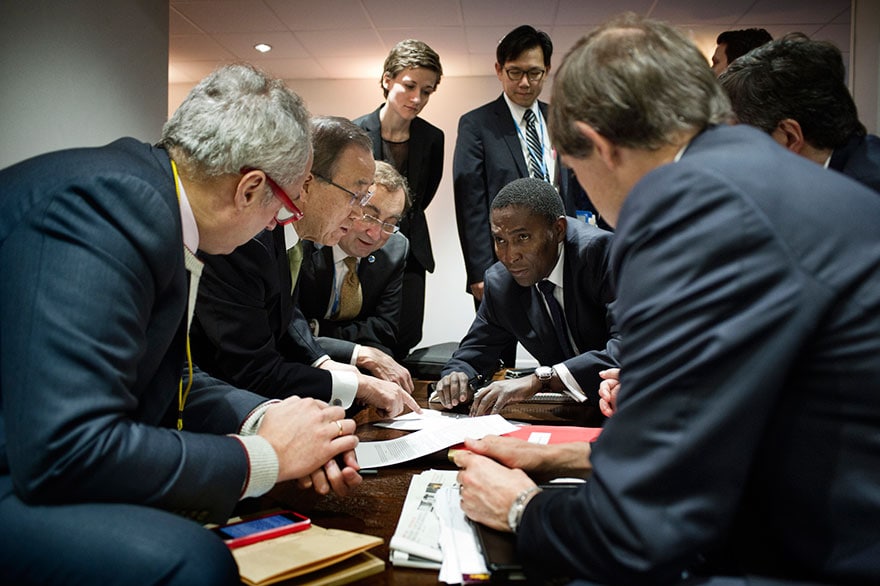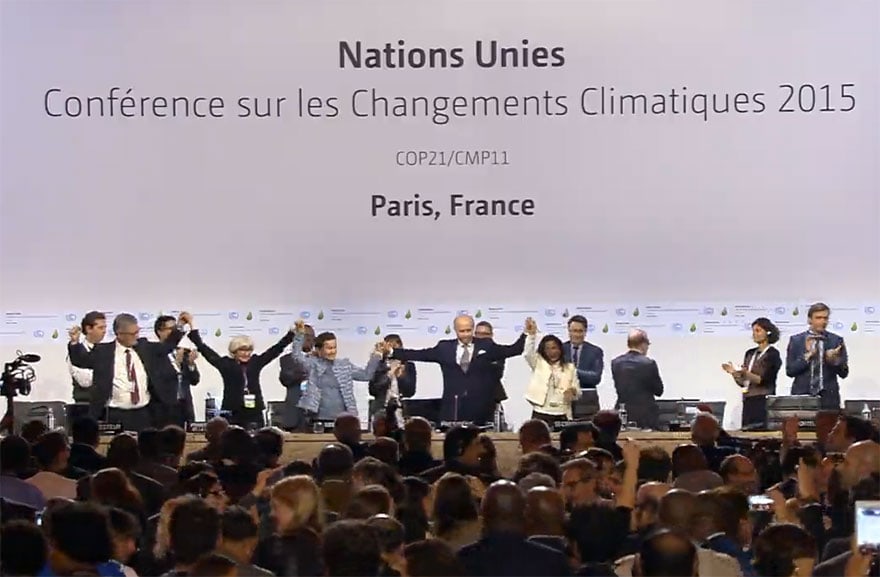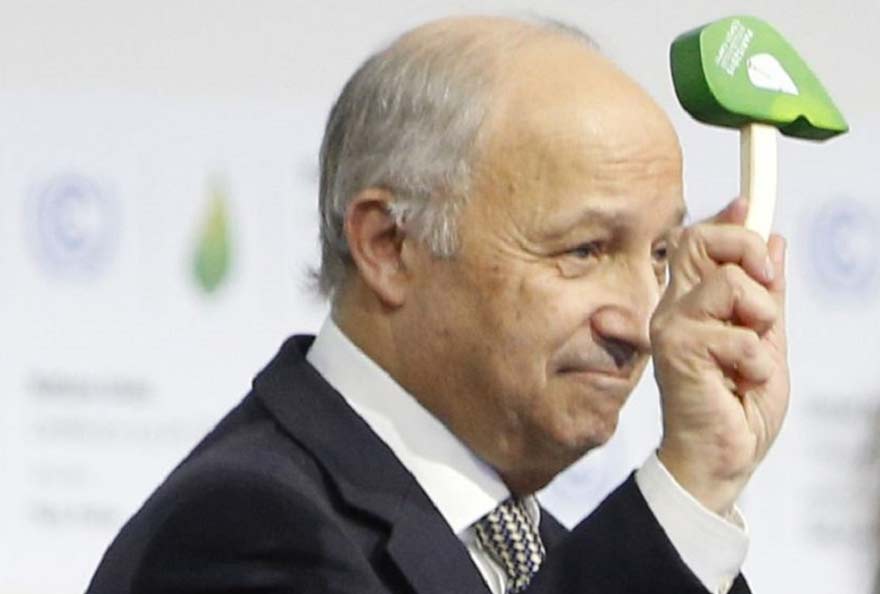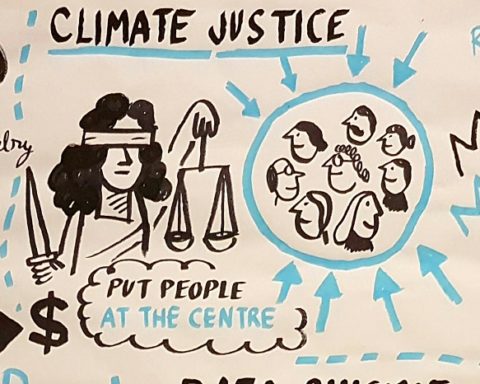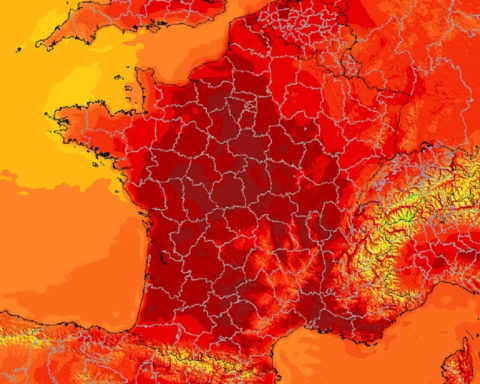The Paris Agreement, adopted on Saturday 12 December 2015 at COP21, represents a balanced and globally satisfactory compromise. Ambition was not sacrificed in the light of other considerations. Let us look at the main points of the text.
2 °C or even 1.5 °C
The text lays down the objective of limiting temperatures to 2 °C, and that efforts should continue to be made to limit them to 1.5 °C (Article 2). The sceptics will say that this is unrealistic... Admittedly, the national contributions do not put us on the 2°C trajectory, and even less so on the 1.5°C trajectory. But they are not definitive and everything possible is being done to push States to raise the level of ambition of their contributions over time:
-
Even before 2020, with a "facilitative dialogue"In addition, the new system, which is scheduled to be implemented in 2018 instead of 2019, is intended to support States in the preparation of their contributions. It should be noted that, very opportunely, the IPCC will produce a report on the concrete regional effects of exceeding 1.5°C by the same date.
-
Also after 2020, with a first global assessment in 2023, then every five years. In short, all of this may evolve in the light of scientific and technological knowledge and the economic, political and social context. But always and only upwards, in accordance with the principle of "progression" laid down on two occasions, according to which the next contribution of each Party must represent a progression.
Peak emissions, carbon neutrality target
The agreement no longer mentions overall quantified emission reduction targets to implement the 2 °C or 1.5 °C. However, the global cap on emissions "will have to intervene" expeditiously "and be followed by rapid reductions in accordance with the best scientific evidence," it being understood that capping will take more time for developing countries ». The term "carbon neutrality" has disappeared, replaced by the softer principle of a "carbon neutral". balance between anthropogenic emissions by sources and anthropogenic removals by sinks of greenhouse gases ». The objective is no longer precisely dated, but it will still have to be achieved in the second half of the century (as opposed to 2060-2080 as previously envisaged).
Means of implementation
The text is indeed a treaty, which will therefore be legally binding for those States that decide to become Parties to it. National contributions, which are at the heart of the mechanism, will not be included in the treaty, not even in the annex, but in a public register kept by the secretariat. The softer term "contributions" has been preferred to "commitments". States Parties shall (indicative of "take") However, to communicate and maintain successive contributions and to take steps to implement them (Article 4§4); this will indeed be an international obligation. Unless, of course, they decide to use their right to opt out of the treaty (Art. 28).
National contributions will be given every five years and it is envisaged to synchronize their duration. Similarly, guidelines will be adopted to guide States in this respect (but to what extent?). All concessions that could not be obtained last year in Lima at COP20.
The implementation of the contributions is also very subtly differentiated between :
- industrialized countries,
- developing countries,
- least developed countries and island developing countries (arts. 3 and 4).
The former must continue to "lead the way". The second must deepen their efforts over time and gradually take contributions that concern their entire economy and not just one sector or another. The latter have no obligation. Reinforced support will allow more ambitious actions by the countries of the South (Article 4(5)).
It should also be noted that differentiation is now conceived as evolutionary: it now reads "having regard to different national contexts"which are themselves, by definition, evolutionary.
A transparency framework is acquired, with an obligation for an annual inventory of emissions (sources and sinks) and information on the progress made in the implementation of the contributions, all data submitted to a technical review by experts, which will be able to identify "areas for improvement"... for a given part (nice paraphrasing to talk about violations!). The link is not explicitly made with the non-compliance procedure that will be established, but one can imagine (hope?) that the two mechanisms will be linked on this occasion. This non-compliance procedure is a further guarantee of transparency and robustness, even if it will be "non-adversarial and non-punitive."and will take into account the respective national situations and capacities.
Here again, and even if on many points it is not only an end, but (also and above all) a new beginning, and if negotiations have to continue in order to make it operational, the agreement is the product of a magnificent balancing act. It is very encouraging to see that 195 countries with such different interests have been able to agree on a text that is not a "cheap" one. After the adoption of the global sustainable development goals at the United Nations in September, this gives some hope for the multilateralism that the world needs more than ever!
Sandrine Maljean-DuboisCNRS Research Director at the Centre d'études et de recherches internationales et communautaires (CERIC), Aix-Marseille University
Photo: Final discussions on the text of the Paris Agreement on Saturday 12 December 2015 with UN Secretary-General Ban Ki-moon and François Delattre, France's Ambassador and Permanent Representative to the United Nations. Benjamin Géminel/COP Paris/flickr
The original text of this article was published on The Conversation.

